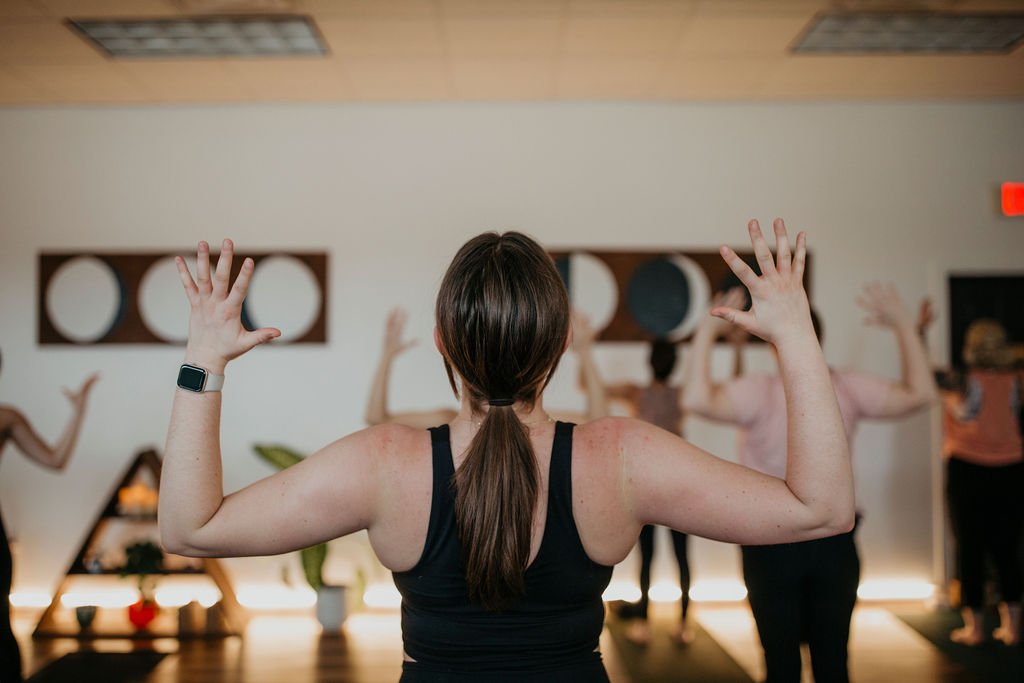Do you ever feel like you are waiting to start living? Are you waiting for this or that to happen before you can finally relax and celebrate your destination? Check in with your thoughts for a day and see how often you’re replaying past experiences or overthinking what’s to come. Research shows us that mindfulness and savoring the moment are distinct predictors of positive emotions and psychological health- and we’re here for that!
The seventh and eighth limbs of yoga, dhyana and samadhi, are practices of concentration on what is here in this moment. Dhyana is a state of contemplation that involves quieting your mind and focusing on the present free of judgment or preference. Samadhi is a state of enlightenment, pure awareness, bliss, and oneness with all that is. This is where you become detached from the past and future and are living with full presence.
Whether it’s in your yoga practice, or your life in general, it’s common human experience to wish you were in another moment than the one you are in right now. Eckhart Tolle, Author of The Power of Now, reminds us that reality can only live in the present: “The only thing that is ultimately real about your journey is the step that you are taking at this moment. That’s all there ever is.”
Here are some practical steps to practice presence with what is and celebrate the now:
1. Set an Intention:
Begin each practice by setting an intention to stay present. Remind yourself of this intention throughout your session to maintain focus.
2. Focus on Your Breath:
Use your breath as an anchor to stay grounded in the present moment. Pay attention to each inhalation and exhalation, and notice how your breath supports your movements.
3. Engage Your Senses:
Use your senses to stay connected to the present. Notice the feel of your mat, the sound of your breath, and the visual cues from your surroundings.
4. Practice Mindful Movement:
Move slowly and mindfully, paying attention to the sensations in your body. Rather than rushing through poses and transitions, savor each movement. Focus on feeling into your body and experiencing your body, rather than worrying about what you look like.
5. Embrace a Beginner’s Mind:
Approach each practice with a beginner’s mind, regardless of your experience level. Stay open to new experiences and discoveries in each pose.
6. Stay Curious:
Maintain a sense of curiosity about your practice. Ask yourself questions like, “What can I learn from this pose?” or “How does my body feel in this moment?”
Remember, yoga at it’s heart, helps us remember we are always enough and everything we need is already here. So who you are and where you’re at right in this very moment is worthy of celebration!









